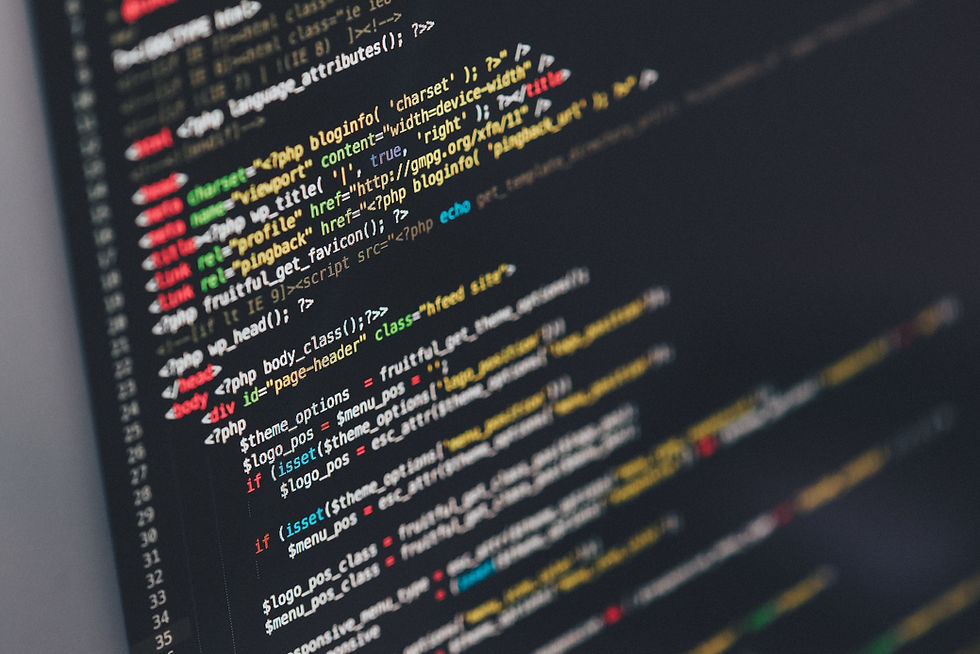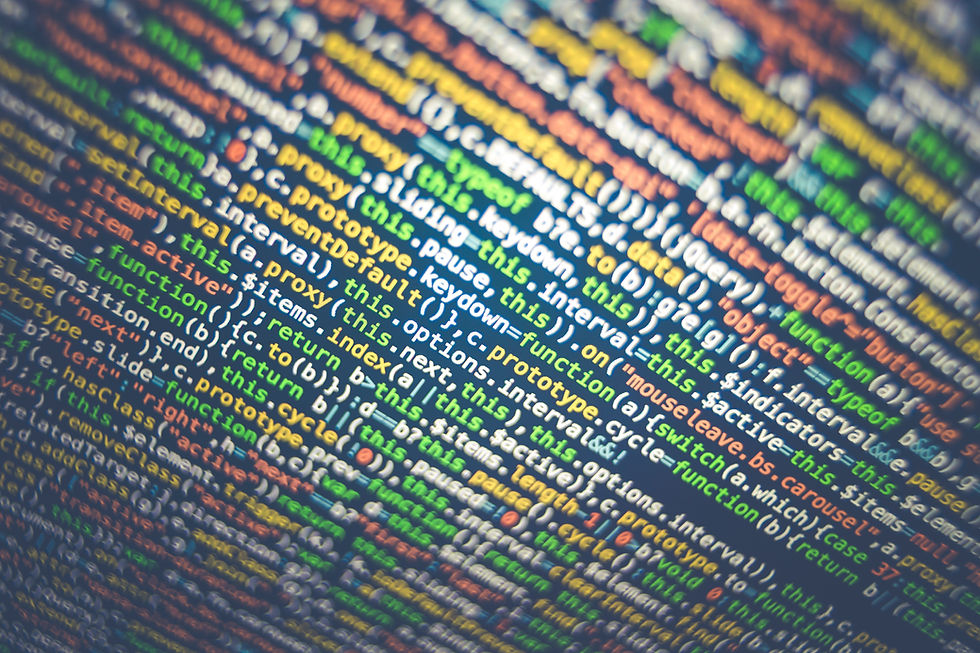Love it or loathe it, social media is currently more important than ever
- Paul McRae

- Oct 25, 2023
- 7 min read
Updated: Nov 21, 2024
Used properly, its an unfiltered lens for us all
Oct 25th 2023
Social Media can often be a terrible place to spend time. Toxicity, hatred, racism, sexism, homophobia, bullying, harassment, false stories, the list goes on.
Moving through one negative thread in your timeline, then to another and another. The platforms have garnered an awful reputation at times, and quite rightly so. After all, do you often finish a marathon session of “doom scrolling” on Facebook, Twitter or Instagram and feel that it was a wholly worthwhile, educational and fulfilling experience, rendering it time well spent? I would hazard a guess that more often than not, the answer is no.
The mis-information element of these experiences is a particularly worrying and growing trend on these platforms where anyone can share anything with a device and a social media account. However, with the last 18 months horrific events in Ukraine and the more recent and equally dreadful scenes now taking place in the Middle East, the role of social media, and the internet in general, has rarely been more important, serving as a tool to highlight and inform on what is really taking place on the ground, away from the mainstream media lens.
But for all that you see, how do you know what is true and what is false? And who is controlling the narrative?

Separating the truth from the lies
With so much uncertainty and bad news taking place at the moment, how do we ever know what content is true and what is false from the information that we consume from the media? Which stories are factual and accurate and which are lies and misinformation? Who are the perpetrators and who are the victims? As humans, we need to understand the context to the situations which are taking place, along with peoples motives and actions, so that we can justify or condemn their behaviours. It may not change anything tangibly, but knowing for our own reasons, many of which are different, is essential for our understanding and helps shape our thoughts and ultimately our values and beliefs. With the correct information, we can then make choices, such as who to vote for in a general election, which countries to travel to, who to donate money to, whether to follow government advice, and so on.
But in this age of information overload, where we have access to more content than ever before, how do we get the correct information and from where?
Of course, our information sources aren’t what they used to be. Historically, in the main, it came to us via journalists. And the history of journalism stretches back centuries.
Scribes
Before the traditional printing press and the publication of newspapers, word of mouth was the primary source of “news”. Returning travellers brought news back home and ancient scribes often wrote this information down. This was then distributed, via various channels and means, however this method of transmission of news was highly unreliable.
By 1400, businessmen in Italy & Germany were compiling handwritten chronicles of important new events, and circulating them to their business connections. However, it wasn’t until 4 centuries later that the idea of using a printing press for embossing this material would 1st appear and around 1600 the first true newspaper was published, entitled the “Collection of all distinguished and memorable news”. Doesn’t quite roll of the tongue however, we were up and running. In 1622 the first English-language weekly magazine, "A Current of General News" was published and distributed throughout England. The news circulated between newsletters through well-established channels in 17th-century Europe with favourite topics including wars, military affairs, diplomacy, and court business and gossip.
Newspapers in all major countries were now starting to become more popular and moving onwards to the 19th century, following a series of technical, business, political, and cultural changes and with the invention and production of high-speed printing presses and cheap wood-based newsprints, large circulations were finally possible. The rapid expansion of elementary education meant a vast increase in the number of potential readers and political parties sponsored newspapers at the local and national levels. Towards the end of the century, advertising became well-established and was the main source of revenue for newspaper owners. This led to a race to obtain the largest possible circulation and the number of newspapers in Europe in the 1860s and 1870s began to rise steadily and continued to grow through the start of the 20th Century to reflect what it is today.
Television
In 1900, audio transmission via radio signals had been successfully achieved and new via"wireless radio" started to become more prevalent. Television as a medium also entered the fray in the 20th century, with Scotland’s John Logie Baird demonstrating the 1st live television transmission in 1927 when he transmitted a signal over 438 miles of telephone line between London and Glasgow after he had unveiled the television set 2 years earlier. Throughout the rest of the 20th century and until the late 1980’s, only the BBC, ITV and Channel 4 could provide us with regular televised news and video footage in the UK. When BSkyB, now known as Sky, launched in 1989 they ushered in the start of 24/7 news coverage for the UK, pushing news to you rather than pulling you in at 6pm, 9pm or 10pm like the terrestrial channels were doing. A recycled dustbin lid with a Low Noise Block Downconverter (or LNB) pointed towards the stars was now feeding us round-the-clock news coverage straight in to our living rooms, stories breaking to us live from various locations around the world without the need to wait for an allotted time later in the day. The Live Information Age had truly begun.
Push broadcasting continues today in media, albeit across many more diverse platforms, analogue and digital. Each outlet has their own agendas. Political, Geo-Political, Financial. As long as those objectives are met they can also deliver the news.
Newspapers such as the Daily Express and Sunday Express, the Daily Mail, The Daily Telegraph and The Sunday Telegraph, The Sun and The Sun on Sunday, The Times and the Sunday Times, the Daily Express and the Daily Mail are widely regarded as Conservative Party papers. The Daily Express and the Daily Mail are amongst those papers who champion the Royal Family, coveting exclusive coverage, ready and eager to publish their stories of the monarch in a positive light to a section of the public, hungry for information.
The Daily Mirror and the Sunday Mirror, The Guardian and The Sunday People are regarded as papers who endorse the Labour Party.
The Sun and The Sun on Sunday, as well as Sky TV and Fox News are all owned by 1 man, Rupert Murdoch, his vast rule able to influence many factors across the media, worldwide, which continues to this day as he prepares to transition power to his children.
Online
As we approached the end of the 20th Century, the internet began to rear its head, the phenomenon of what was bout to emerge being something that very few could have predicted, the transformative effects of which could fill 10 of these blogs and which may well do, another time.
In the early 2003, approximately 5 years after the start of more widespread internet usage, Social Media sites started to appear. Friendster, MySpace, Facebook and Twitter were some of the 1st more well known sites to appear. Suddenly, you no longer had to work for a news corporation to speak to the masses. We now had non-journalists able to journal, report, blog and post audio and videos to as big an audience as were willing to listen, offering stories and insight of varying themes.
With the creation of the Smartphone, including the launch of the Apple Iphone in 2007, we now had a touchscreen internet computer in our pocket, albeit not a fully optimised one. With very few apps available or being developed and with 2G connectivity still the norm, web pages and loading times were slow and unrefined, but this quickly changed. By 2010, more defined and refined apps were running faster on 3G connectivity making the experience much more attractive to us for consuming content that we were interested in. Fast forward to today, the information available to us is vast - and continues to grow exponentially.

Consider this
But who controls the narrative? Politicians? Governments? Media Empires? Tech Billionaires? Or us, based on what we know, through education and research? Rupert Murdoch's long legacy in charge of his empire may have influenced many decisions that we are unaware of. Elon Musks acquisition of Twitter may open up opportunities for him to exert influence in whatever space he chooses. As they say, media is politics but by another name.
And media is about to become even more muddied. The rise of Deepfake Content, where software can superimpose someone’s image over another’s, has become so sophisticated and believable that it is almost impossible to tell what is genuine and what is not. The task of proving and disproving whether content is authentic or not will become more challenging as the technology evolves and improves with lawsuits sure to increase as celebrities images are used and re-used for all manner of purposes.
That, and other advances in technology, specifically AI, will continue to present challenges surrounding integrity and truth.

Conclusion
Social media and the internet, and its enablement of the non-journalist “journalists” to tell their story, regardless of your opinion on it, may well be our best chance of freedom of speech and broadcasting of truth - one persons truth at least.
For all its flaws, the internet, and in particular Social Media, is now more important than ever. It allows normal people, not journalists, politicians or business moguls, to tell their story.
But it is important that we use it to our benefit. Before sharing or re-sharing anything on social media, consider the 5 W’s:-
Who made it?
What is the original source?
Where did it come from?
When was it published?
Why do you want to share it?
Although there is only 1 truth, when 2 sides are involved, or at war, there is always 2 sides to the story.
In terms of looking after yourself, the rule of Social Media is - Use it, don’t let it use you.
And finally, remember to take a Digital Detox every now and again - time away from constant information consumption will do you the world of good every now and again.
And that is something that is easy to believe.





Comments